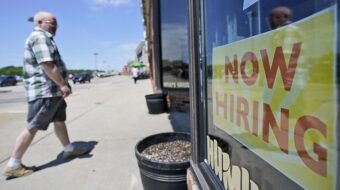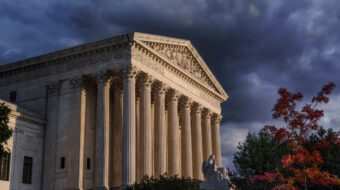Opinion
Suppose the police in one community staged, with guns drawn, a drug raid at a high school and rounded up more than one hundred students to search and arrest – but found no drugs.
Suppose they staged that drug raid at a predominantly white school – but staged it at a time of the morning when most of the students in the school they would round up would be African American – but still found no drugs.
Suppose during that drug raid the school’s principal, who is white, in at least one instance directed police officers to specific groups of students; and those officers then proceeded to put plastic handcuffs on their wrists, and train guns on them and allow a police dog to prowl among them as the principal and other school officials searched inside some students’ pockets.
But still found no drugs at all.
Wouldn’t you have questions?
Wouldn’t you have questions about what was really behind such a so-called drug raid?
What was behind the so-called drug raid at Stratford High School is the issue facing the Charleston, S.C., suburb of Goose Creek. There, the principal’s call for and participation in a police raid at the school on Nov. 5 has raised questions about the reliability of tips gained from police informants, about a principal’s interpretation of activity he thought he saw occurring in his school, and – as it should – about the role individual and communal racial attitudes played in the disturbing affair.
Part of the aftermath has been the filing of two federal class action lawsuits – one by several private laws firms, the other by the American Civil Liberties Union – on behalf of parents of students who were detained, and a flurry of meetings by the state chapter of the National Association for the Advancement of Colored People and by the Rev. Jesse Jackson, Sr.
The videotape drawn from the school’s surveillance cameras that has been playing on national television since the story broke shows such actions are warranted. On it are the shocking images of more than 100 young people – three-quarters of them Black – who had done no wrong, being forced to kneel on floors with their hands held high or behind their backs.
But no trace at all of drugs was found on any student, or in any student locker, or anywhere in the school.
Local news reports have said that the Goose Creek police department’s rules require that police dogs be used in searches for drugs only after an area has been cleared of people.
Yet, the Stratford High videotape shows a police dog, its leash held by an officer, passing close to kneeling students, barking and sniffing their backpacks and grabbing one backpack and shaking it.
What was the reason for this astonishing behavior by adults toward these schoolchildren – none of whom, let us remember, were found to have done anything wrong?
The reason – apparently – lies in the words, caught by the school’s videotaping system, one officer directed at the kneeling students.
“If you’re an innocent bystander to what has transpired here today,” the unidentified officer barks, “you can thank those people that are bringing dope into this school. Every time we think there’s dope in this school, we’re going to be coming up here to deal with it, and this is one of the ways we can deal with it.”
There’s the reason, then: Intimidation of the innocent out of a frustration at not catching the guilty.
Supposedly, the 17 surveillance cameras in Stratford High had picked up activity in the past that seemed to indicate drug transactions were occurring. Supposedly, there was “intelligence” that some students were dealing drugs in the school.
But, said local attorney Marlon Kimpson, the raid represented a dramatically wrong way of trying to confirm and root out drug dealing in a school.
“Students don’t shed their rights when they cross the schoolhouse door,” said Kimpson, whose firm represents 17 parents of students detained during the raid and is also the lead counsel with several other law firms in one of the class action lawsuits.
The lawsuit charges that the raid violated students’ Fourth Amendment rights against illegal search and seizure and their 14th Amendment rights of due process.
“Those responsible (for the raid) were either ignorant of students’ rights, or they deliberately intended to provoke extreme emotional distress in these students,” Kimpson continued.
“Remember,” he added, “these were teenagers just sitting and talking with their friends, or trying to get some last-minute studying in, when, suddenly, they were looking down the barrel of a gun held by an armored police officer and being pushed to their knees. This was a terrible blow to their psyches, to their feelings about their reputation among their peers, and to their sense of belonging in that community.”
Those words put in haunting perspective the appalling breach of students’ civil rights in Goose Creek by the adults charged with their care.
Mark Morial is president and CEO of the National Urban League. This article originally appeared at www.civilrights.org.











Comments